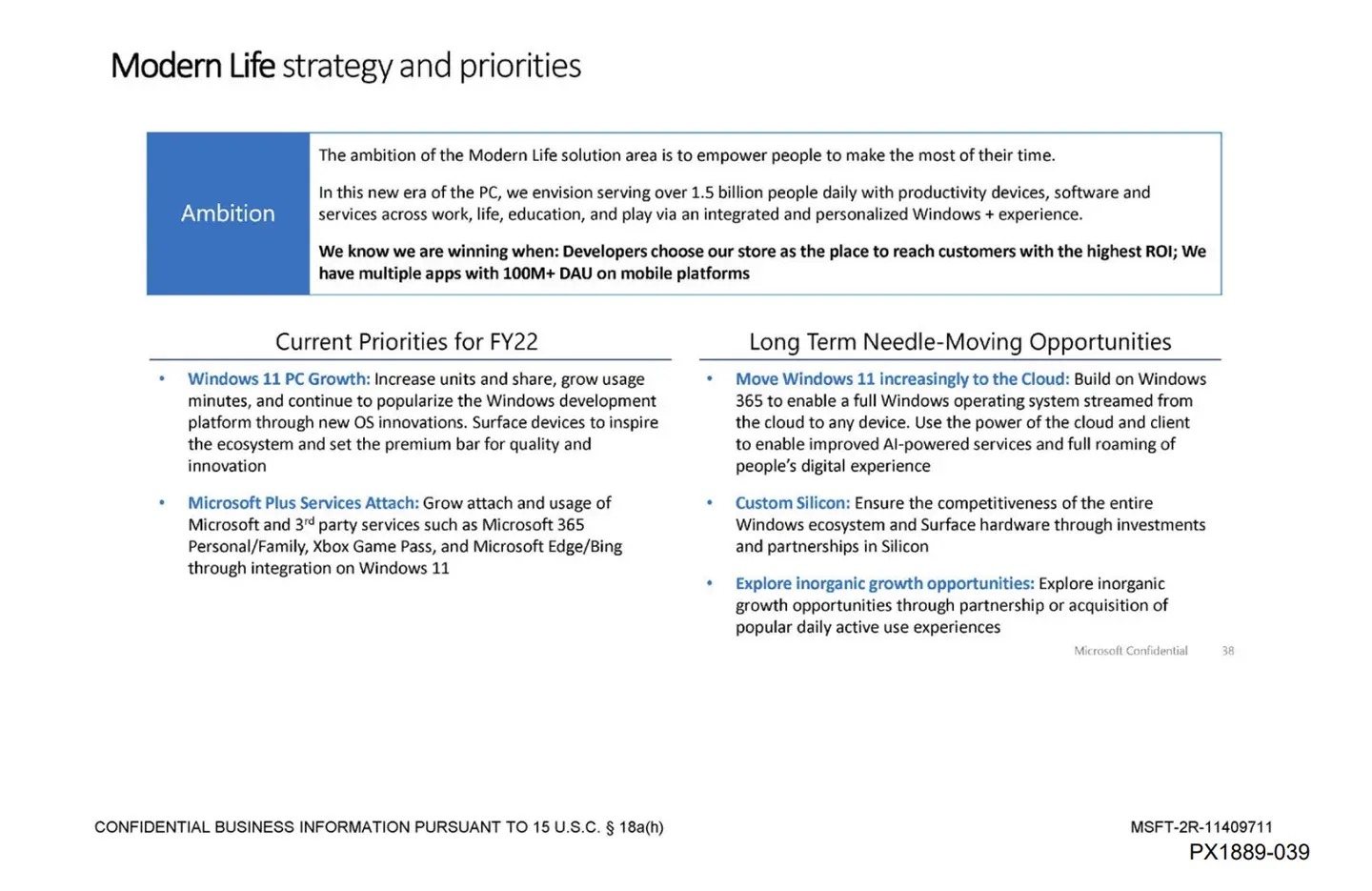Why Microsoft is Moving Windows to the Cloud
The decade-long push to cloud computing is far from over. Microsoft has always quickly identified cloud opportunities and leveraged its strengths to lead the market. And now they’re showing us what’s next by moving their entire Windows operating system to the cloud. It’s a significant change for a product that traditionally relies on individual machines' physical hardware.
Windows as a Cloud Service
The first phase of this strategy was completed with Windows 365, a service that allows for streaming a full version of Windows to various devices. Until now, they’ve reserved this cloud-based version of Windows for commercial clients. However, now they’re interested in expanding it to the consumer market.
A recent internal presentation from Microsoft, revealed during the FTC vs. Microsoft hearing (image below), suggests the company is interested in extending the Windows 365 model to the broader consumer market, offering a full operating system that can be streamed from the cloud to any device.

The long-term opportunity is to increase the usage of cloud PCs for consumers. Google has held a strong position with its Chromebooks for quite some time. And Microsoft realizes they need to strengthen their position.
Ultimately, a cloud-first approach benefits consumers by allowing them to access and sync their work across all devices effortlessly. The consumer becomes untethered by their devices and can operate with whatever device they have on hand at any given time. Theoretically, you could safely access your work from someone else’s device too.
Future Windows 11 updates will integrate features like Windows 365 Boot and Windows 365 Switch, allowing users to log directly into a Cloud PC instance at boot and integrate cloud PCs into the Task View feature.
It’s Also About AI
Beyond the convenience of delivering their OS through the cloud, the shift is also about enabling improved AI-powered services. This aligns with previous statements by Windows Chief Panos Panay, who claimed that “AI is going to reinvent how you do everything on Windows.”
One such project is the Windows Copilot, which is an assistant that sits at the side of Windows 11. It would comprehend the content you’re viewing, the software you’re working out of, and your actions to provide assistance. It’s always there to answer questions, summarize text, and generate content. In other words, it’s a ChatGPT-like feature that is native to the Windows operating system and can operate directly in software like Word and Excel.
But to deliver powerful native AI assistant experiences, they need a deeper cloud integration that can share the processing power with the client hardware.
The cloud computing (and AI) landscape is focusing on ARM-based processors, which can execute many more millions of instructions per second than Intel processors.
ARM processors are a family of central processing units (CPUs) based on a Reduced Instruction Set Computer (RISC) architecture, which is differentiated from the more common Complex Instruction Set Computer (CISC) architecture. By stripping out unneeded instructions and optimizing pathways, an ARM processor can deliver outstanding performance while using much less energy than a CISC-based processor.
This switch is necessary for ensuring that cloud and AI features operate efficiently and quickly, so as to not be a frustratingly slow and burdensome experience for users.
Microsoft’s Surface Pro X devices are already leveraging some of these technologies. And reports suggest that Microsoft is investing in designing custom ARM-based processors and AI chips.
Overall, Microsoft’s strategic shift towards the cloud signifies a fundamental rethinking of how its flagship product is delivered and utilized. By leveraging the cloud and AI, Microsoft is not only modernizing Windows but also preparing for a future where the lines between local and cloud computing are increasingly blurred.

Member discussion